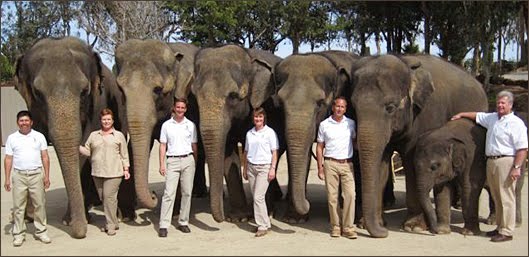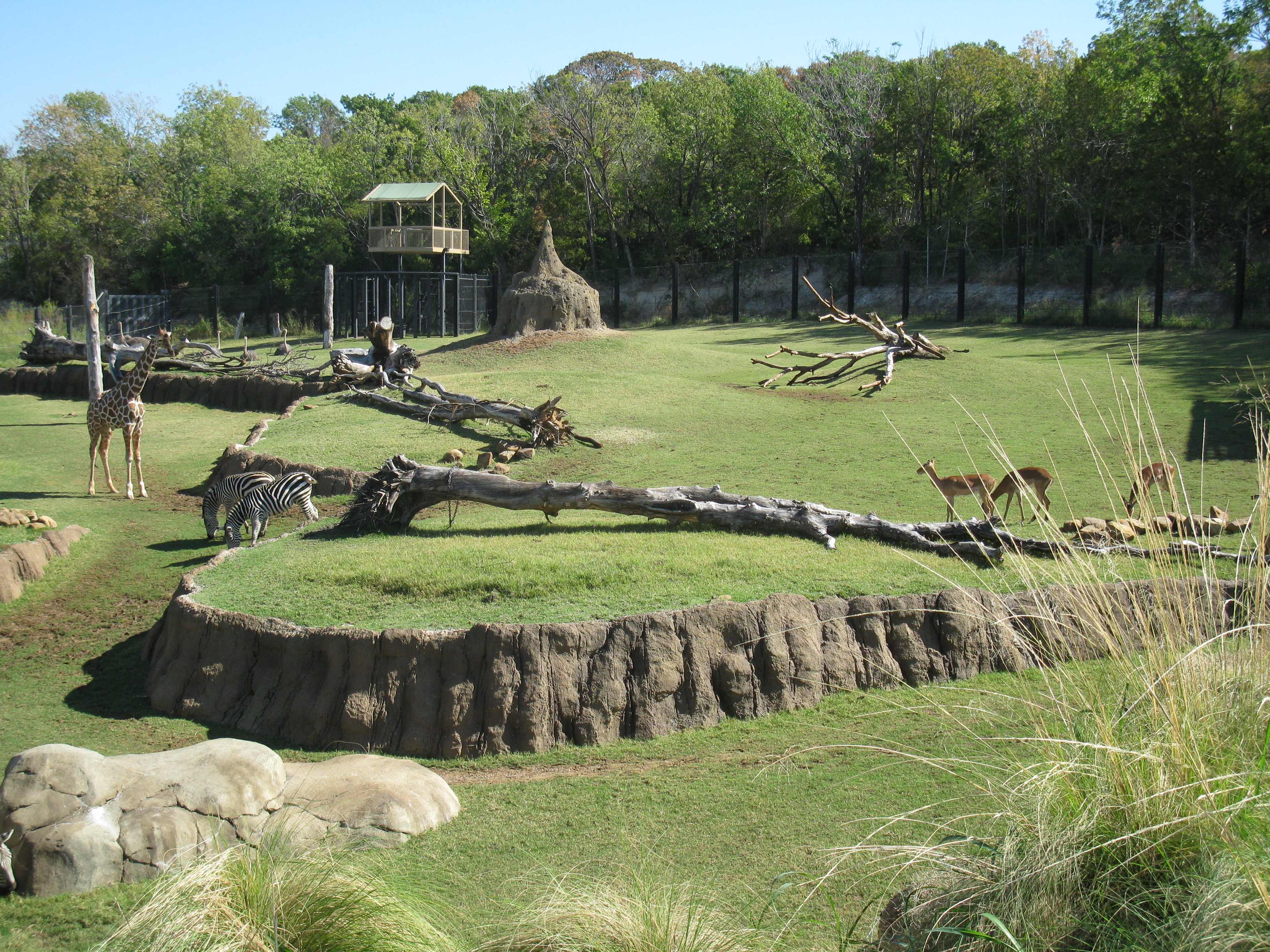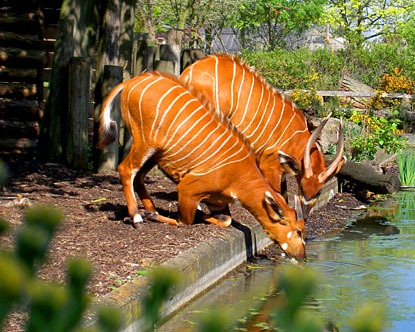Have Trunk Will Travel: The Elephant Company

The point of this blog is to give a two-sided perspective of animals kept in captivity. One of the most notorious companies in the animal rights groups perspective is the company Have Trunk Will Travel, Inc. Have Trunk Will Travel, Inc. is currently based in Perris, California and houses five adult female Asian elephants at its ranch. The company also owns elephants on loan at the Oregon Zoo and Houston Zoo. The company rents elephants for movies, most notably for providing elephants for the movies Water for Elephants, Zookeeper, and George of the Jungle. Have Trunk Will Travel has also provided elephants for the music video "Circus". The company generates its revenue through elephant rentals, mainly through movies, but also with rides and special events. The company is run by the couple Gary and Kari Johnson, a legendary elephant training couple.



In Defense of Animals have continually lobbied to close down HTWT. In Defense of Animals claims that all the elephants at HTWT have been continually abused and should be set free in an animal sanctuary. According to the PETA (People for the Ethical Treatment of Animals) website,
"HTWT has a long history of exploiting elephants. It uses elephants who as babies were captured in the wild and subjected to intense beatings to break their spirits. In their natural environment, the elephants would walk up to 30 miles per day with their families, but at HTWT, they are chained in place by one front foot and one back foot all night, every night, and for more than half of every day during the winter months.
In addition to abusing their own elephants, the owners of HTWT, Kari and Gary Johnson, have repeatedly opposed legislation to protect elephants. In comments concerning federal policy changes regarding training and handling practices for elephants, HTWT defended the use of cruel electric prods and bullhooks on elephants."


Things haven't gone so well for HTWT since the release of the video. In Defense of Animals timed the release of the video perfectly, at the premiere of Water for Elephants, in which Have Trunk Will Travel's matriarch Tai, was the star. Ironically, in the movie, Tai's character is beaten by circus handlers. The movie's director maintains that the groans of pain were prerecorded and no animals were harmed in the movie. However, HTWT has had a lot of fallbacks in the last couple years. The Santa Anna Zoo stopped the elephant rides that HTWT provided and the San Diego Country Fair banned the elephant rides as well.


However, let's look at it from Have Trunk Will Travel's side and their founders Gary and Kari Johnson. They have been taking care of elephants for four decades, in which only in the last decade, have they become under scrutiny for their elephant care. Why? Animal rights purposely put the Johnsons into the public spotlight in order to serve their cause. In Defense of Animals actually filmed the video of abuse in 2005, but released it another six years later, coincidentally at the premiere of Water for Elephants. If the elephants were being abused, why didn't In Defense of Animals release it in 2005? IDA most likely saw the video as a source to squirrel away until the moment was right.

In a recent email to HTWT, Kari Johnson responded to the elephant abuse video with the following statement:
"We are certified members of the AZA Species Survival Plan, and serve on the California State Fish and Game Animal Welfare Advisory Committee. We have served as members of the animal welfare committees for the Western Fairs Association, the Outdoor Amusement Business Association, have been presented with the Lifetime Achievement Award by the Elephant Managers Association, and are founding members of the International Elephant Foundation. Our elephants participate in research projects to advance elephant health and breeding programs to ensure the survival of this endangered species. We work with and for elephants.
We provide the public with up close, tactile access to elephants. 100% privately funded, revenue from our events help fund the ranch and everything we do with our elephants including conservation, breeding programs increasing Asian elephant awareness and health research. To date, we have succeeded in producing six elephant calves. We are raising funds for, and contributing to, the species’ survival. We are dedicated to the enhancement and survival of elephants."
It's hard to say, but after closely examining the elephant abuse video, there appears to be no real permanent damage to the elephants nor excessive beatings. Unlike some Ringling Bros. abuse videos, HTWT's "abuse" sometimes appears to be nothing more than a gentle poke. And with an elephant's thick skin, it's hard to imagine that there would be any real harm. HTWT also stated
"It's worth noting that the animal rights extremists have no professional expertise in the area of elephant care and training - they have only opinion (which they are certainly entitled to). However, the USDA (the government body charged with oversight) did not lend the video any credibility at all. The AZA (Association of Zoos and Aquariums), of which HTWT is a voluntary member, did exhaustive investigations based on the video and inflammatory allegations and found no evidence of abuse or cruelty. Their claims simply do not hold up under closer - and unprejudiced - inspection by experts. Experts in both elephant care and video production point out the sloppy, dishonest characterizations used in the video."

So what's the final verdict? It's hard to say, as both sides have equal evidence. HTWT is guilty of using bullhooks, chains, and otherwise, abusing its elephants. However, there is no evidence to suggest HTWT does it regularly. The video shows only snippets of "abuse" and does not immediately conclude that HTWT beats its elephants regularly. It also shows that if HTWT was abusing its elephants, why were there no accidents? Generally, when elephant handlers beat their charges, elephants have a history of lashing back and killing their trainers. HTWT has no recorded accidents or deaths, quite an accomplishment for an occupation that was ranked three times more deadlier than coal mining. In the end, Have Trunk Will Travel will most likely continue, serving in its mission to educate the public with rides and shows. PETA and IDA will continue to hammer away at the company, hurling accusations and mud. Both have legitimate concerns and arguments. Unless Have Trunk Will Travel does something outrageously cruel, they will most likely continue.

Bryan's opinion: I do not believe that HTWT is a terrible organization designed to exploit and beat these majestic animals. I also do not believe that they use positive reinforcement all the time, hence, the video. However, it is plausible that HTWT loves and cares for their elephants deeply. They have an excellent track record when it comes to elephant lifespans, with three of their elephants already in their mid-forties. I believe they have made some mistakes, as people have, and I do not condone with the use of bullhooks or electric prods. However, if they continue to care for their elephants greatly and provide an enriching and comfortable home for their five elephants, then HTWT has my approval (although they don't needs it).
Links:
HTWT abuse video: http://www.youtube.com/watch?v=50wBdPhBQGo
HTWT training: http://www.youtube.com/user/ElephantAmbassadors?feature=watch






